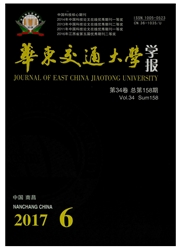

 中文摘要:
中文摘要:
以铝板为研究对象,首先基于超声仿真技术,设计了"单发多收"超声阵列探头,对位于铝板内部不同深度处的21类缺陷分别进行建模和仿真分析,并获取相应的时域信号;其次,基于主成分分析(principal component analysis,PCA),对各缺陷的幅频初始特征进行提取,获得各缺陷的特征向量;最后,采用概率神经网络(probabilistic neural network,PNN)对各缺陷进行定位分析。研究分别以21×9和21×4个缺陷为训练样本和测试样本,分析结果表明:缺陷定位的平均正确率为82.14%,96.43%,100%。研究论证了采用超声阵列探头,并结合主成分分析和概率神经网络,进行缺陷定位的有效性。
 英文摘要:
英文摘要:
Taking aluminum plate as the research object, based on ultrasound simulation technology, this study firstly designs the array probe of single-launch-multiple-reception model, which simulates 21 kinds of defects located at different depths inside the aluminum plate to obtain the corresponding time domain signals. Secondly,it extracts initial features of amplitude frequency of all defects to gain each defect feature vector according to principal component analysis. Finally, the probabilistic neural network is used to make location analysis for each defect. The training samples of defects and the test samples of defects are explored. Results show that the average accuracy for locating defects is 82.14%, 96.43% and 100% respectively. The research demonstrates effectiveness of the defect localization by using ultrasonic array probe combined with principal component analysis and probabilistic neural network.
 同期刊论文项目
同期刊论文项目
 同项目期刊论文
同项目期刊论文
 期刊信息
期刊信息
